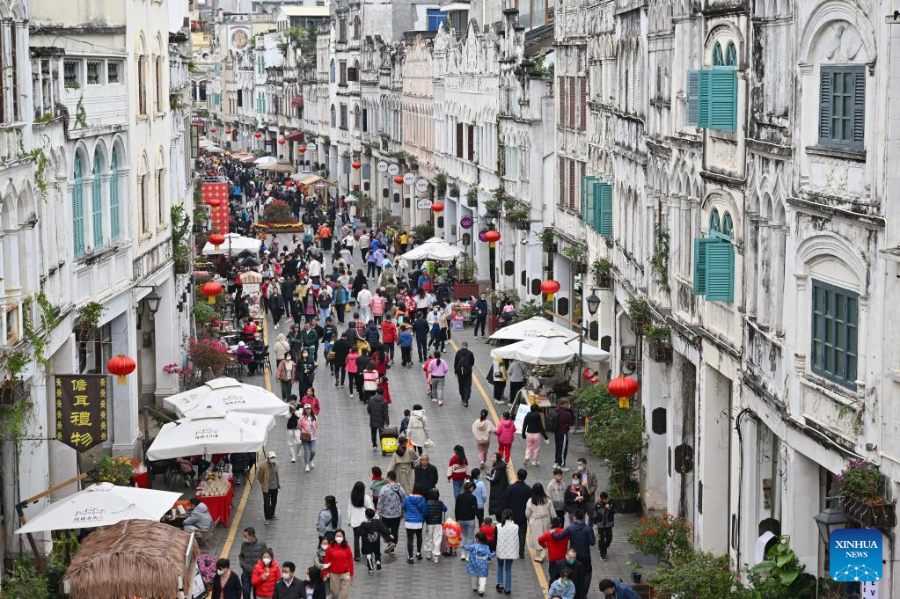Major Chinese cities see strong tourism rebounds during Spring Festival holiday

Tourists visit the Qilou ancient street during the Spring Festival holiday in Haikou, south China's Hainan Province, Jan. 27, 2023. [Xinhua/Guo Cheng]
BEIJING/SHANGHAI -- Major cities in China witnessed strong rebounds in tourist arrivals during the Spring Festival holiday as pent-up demand was unleashed after China optimized COVID response measures.
Official data revealed by the municipal administration of culture and tourism shows that Shanghai, a financial hub in eastern China, received over 10 million visits during the seven-day holiday, with tourism revenue reaching 16.64 billion yuan (about 2.5 billion U.S. dollars). The city's main tourist attractions received over 4.1 million visits, about 90 percent of the figure during the Spring Festival holiday in 2019.
Beijing, the capital city, welcomed over 7 million tourist arrivals during the same period, generating a tourism income of 7.46 billion yuan, up 6.2 percent and 57.6 percent from the previous year, respectively. Each tourist spent an average of 1,047 yuan in Beijing, up 48.4 percent year on year and 4 percent higher than the reading in 2019.
Other major tourist cities, including Xi'an, Sanya, Harbin, and Chongqing, all logged a robust recovery over the seven-day Spring Festival holiday, with tourists thronging to popular tourist destinations and restaurants.
"I waited 40 minutes for a roujiamo," said a tourist in Xi'an, northwest China's Shaanxi Province. Roujiamo, also called a Chinese hamburger, is a signature street food in Xi'an, an ancient city home to the Terra Cotta Warriors.
In addition to iconic tourist attractions, short-tour rural trips in the suburban areas also saw a big bounce in tourism.
Beijing's rural areas received over 1.34 million visits, an increase of 54.4 percent year on year and a growth of 22 percent over 2019. Total operating income from these trips was 162.9 million yuan, up 18 percent year on year and 51 percent over the level in 2019.
"I was thinking of a different way to celebrate the Chinese New Year, so I came here with my family, climbing the Mutianyu Great Wall and experiencing traditional customs such as paper-cutting and lion dance. The hustle and bustle of country life takes me back to my childhood," said a tourist surnamed Wang.
This year's Spring Festival is the first in three years not to encourage Chinese people to stay put during the festival to prevent large-scale outbreaks.
In response, local governments and industries are rolling out festive activities, lively bazaars, and shopping coupons, in all-out efforts to buoy the long-awaited recovery from the COVID-19 doldrums. Tourists, either bathing in the sunshine on the coastline or braving the winter cold in ski resorts, have been inundated with a whirlwind of customized activities.
Data from the country's Ministry of Culture and Tourism shows about 308 million domestic trips were made in China during this year's Spring Festival holiday, up 23.1 percent year on year.
Domestic tourism revenue generated during the week-long holiday totaled 375.8 billion yuan, up 30 percent year on year, it added.
"The data shows that medium and long-distance tours began to lead the holiday tourism economy. Coupled with the consumption power of tourists returning home to visit relatives, the market scale, consumption structure, quality, and economic benefits of tourism during the Spring Festival holiday are comprehensively returning to normal," said Dai Bin, president of the China Tourism Academy.
























